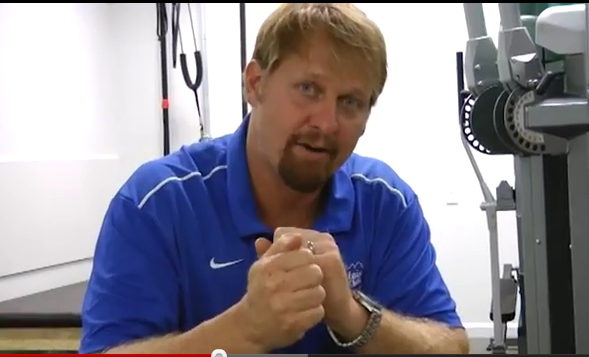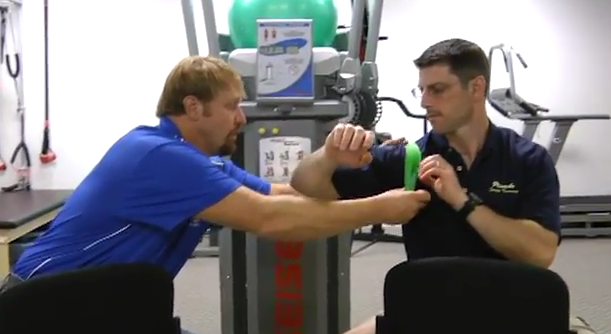The Importance of Implementing the FMS Among High School Athletes
Written by FMS Video
The above video is a feature on how Hargrave Military Academy basketball team has used the FMS to help direct the training and rehab of their athletes. Hargrave is one of the most successful programs in the country having produced 100 Division 1 scholarship athletes over the last decade.
FMS's Don Reagan of Mountain River PT works with Hargrave and describes how evaluating their movement has enabled him to become more proactive with his treatment and training:
"The tools within Functional Movement Systems have provided me the opportunity to transition from not just a rehab or mediation professional, to performance and optimization professional," says Don Reagan in the video. "Now we're doing screens at the beginning of the year... and looking at their movement quality. We're able to help them manage their movement before they are injured."
Junior high and high school athletes can be the most challenging populations for strength coaches to work with, in part, because the significant difference between chronological age and biological age. Two athletes can be the exact same age, but at different ends of the spectrum in terms of physical development, movement literacy and training experience.
Using a cookie-cutter training or prehab program for every athlete is inefficient, and, potentially, detrimental.
This is a sentiment echoed by FMS Certified trainer Peter Kafaf, a football coach who has worked with some of the best linemen in the country, including former #1-ranked prospect and current Michigan freshman Rashan Gary.
When Kafaf met Gary, he didn't look like the athlete who would mature into the recruiting prize of the 2016 class.
"Rashan couldn’t move. Hips were tight as a drum. He scored 1’s on both his hips," Kafaf told us. "He worked hard to improve his limitations and he became even faster, even more explosive. His 40 yard dash time dropped from a 4.94 to 4.74. Now it’s terrifying how fluid he can move."
"Rashan’s upper body was as tight as I’ve seen on any kid I’ve ever worked with. Like frozen chicken legs. His hands are terrifyingly fast now, but were the complete opposite when I met him."
Gary may have become a game-breaking athlete on the football without the FMS, but understanding how he moved helped direct his training, both on and off on the football field.
Kafaf discovered the FMS through a trainer who was working with his then 8th-grade son. Kafaf's son had movement limitations which made it difficult to train. Poor mobility in his hip and thoracic spine (extremely common among teenage athletes) was causing lower back pain and discouraging his pursuit of sports. When the trainer showed how improving his movement in key areas could alleviate strain on his shoulders and lower back, Kafaf was hooked.
"If it wasn’t for FMS, my son probably would’ve quit sports. If he didn’t start moving better he would’ve never found rugby and had the opporunity to compete in college."
"It seems like 9 out of 10 kids have some degree of improvement that they can make in their hips. That's problematic because many sports and exercises in the weight room demand good mobility in the hips. If kids don't have it, they are at risk of injury."
"I'm convinced that one of the most dangerous places you can send a kid is to a high school weight room if they haven’t been screened," says Kafaf.
While weight training is an effective strategy for reducing injury risk in athletes, health and fitness professionals will agree that a poorly designed program can do more harm than good. Early studies of injury rates in teenage athletes indicate that younger athletes are most susceptible to injuries in the weight room and that the majority of injuries occured in unsupervised settings. Conversely, when a young athlete is properly trained and supervised, injury rates in the weight room are lower than those observed when children are at play during recess (and a fraction of sports like football, wrestling and cross country).
"I’m religious about the FMS because it’s criminal what improper weight programs can do to high school kids," says Kafaf. "They walk into a weight room and are asked to squat and deadlift, but the majority of kids don't have the mobility and symmetry to perform those lifts."
"The urgent message to these kids is that this is single best thing to do for performance and health is to understand how you move before starting to train," says Kafaf. "Think of the FMS as a tuning device for your body. A guitar doesn't play well when it's out of tune, nor does your body doesn't perform well when it's out of tune."
The FMS isn't necessarily a path to speed and explosiveness, but it is a tool to help safely train speed and explosiveness. Thousands of college football players are screened every year (including three of the more promising linemen in the BIG10), but many high schools would benefit from implementing the system into their athletic programs.
110,000 fans and who was the most proud? Had a great day watching The Lab's @RashanGary33 @mike_dwumfour @Sickels_90 at the Big House. pic.twitter.com/0Wy069NvEV
— Peter Kafaf #TheLab (@kafaf_peter) September 25, 2016
Related Resources
-
FMS Unplugged: Split Squat - Episode 8
Posted by FMS
Please login to leave a comment
2 Comments
-
Jason St Clair Newman 1/16/2017 6:10:39 PM
I can back this up first hand with what I see in Football (Soccer) here in the UK as well at our Academy. Most kids have very poor movement skills. Introducing the FMS has helped in a big way with the players who do resistance training.
-

maria nicholas 2/8/2017 2:45:29 PM
Thank you so much for this great article....As a mom with my son in the weight room ( developed upper cross in 3 months) , I pray he doesn't get hurt. Lets face it they don't listen to mom/trainer, they listen to the football coach who is preaching in weight lifting class...Ive been looking for good articles to help support my concern with our high and middle schools. I am aiming for our county school system to use the FMS screening county wide.
Any more advise in helping me accomplish this is appreciated!





